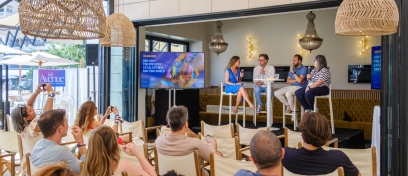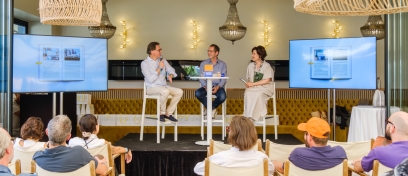Street smarts: 5 ways digital out-of-home is helping connect cities with citizens
ooh - A community hub in the city of tomorrow
The concept of the ‘smart’ city – a city that integrates internet connectivity into everyday objects to boost efficiency and improve the lives of residents – promises to dramatically remodel the way we interact with the urban environment.Many cities are still in the process of defining what it means to become ‘smart’, but already, brands and media owners are using out-of-home (OOH) advertising space as a platform to showcase their potential roles in the cities of the future – and connecting with consumers by providing new services: as Steve Payne, Director of Insight and Marketing at Kinetic Worldwide, notes in WARC, “more than just advertising, OOH sites are becoming community hubs.”
Approaches to these ‘smart’ city activations vary considerably. As the long-term owners and operators of prominent media assets, OOH companies naturally have an important role to play in the development of the smart city – but brands have also been keen to play their part.
keeping residents informed about their city
The work of JCDecaux is a prime example. In March 2019, we announced the rollout of our ‘smart’ furniture in the Hauts-de-Seine region of Greater Paris – including 36 street furniture units designed by Brazilian architect Carlos Bratke. The street furniture will deliver useful information from the local council to residents and visitors, as well as real-time weather, temperature and traffic updates. As part of the programme, JCDecaux put in place a number of measures to limit the furniture’s environmental impact, including optimising its energy efficiency and carrying out regular analysis of its life cycle.
Empowering city dwellers with boosted connectivity
But our initiatives aren’t just about giving urban residents useful information – we want to equip people with the resources to always be connected when out in the city. JCDecaux has contributed to the development of ‘smart’ cities as diverse as Amsterdam and Panama City as well as Paris, by working with telecommunications operators to install small cell wireless network boosters in our street furniture - which can reportedly triple download speeds. With demand for mobile connectivity constantly growing, small cell wireless network boosters will help create a more convenient experience for everyone who moves through the city.

waiting for the bus in your living room
Many brands have also developed OOH ‘smart’ city schemes. Naturally, these are often less permanent than initiatives led by OOH media owners, but they nonetheless offer blueprints for ways in which cities can adapt themselves to make life easier for residents.
Some brands opt for strictly practical solutions: Google worked with JCDecaux North America to transform certain Chicago bus shelters into ‘smart’ homes to promote its Google Home product. Passengers and passers-by used touchscreens at the bus stops to set the temperature, play music, dim the lights and perform a range of other tasks – demonstrating the convenience and labour-saving capabilities of Google Home.
Charging at the bus stop
In Singapore, Samsung used OOH to address a particularly 21st century phenomenon: phone batteries running low while their owners are on the move. Samsung partnered with JCDecaux and media agency Starcom to promote the power-sharing capabilities of its latest device by installing wireless charging points in strategic city centre locations. 1.5 million consumers pass through the retail belt weekly, according to Isaline Duminil, Marketing Director of JCDecaux Singapore. The campaign is “distinctly human and experiential” according to Vivien Tan of Starcom Singapore, “integrating the consumer experience with technology to drive meaningful business and human outcomes.”Virtual Valentine’s
Other brands have encouraged consumer engagement by offering more light-hearted ‘smart’ services. For Valentine’s Day, jewellery brand Pandora teamed up with JCDecaux UK to build an installation for its Gemma virtual assistant in London’s Westfield Stratford City shopping centre. Based on information such as gender and relationship status, Gemma provided passers-by with dating tips and advice.Despite the differences in approach, what unites these campaigns is their focus on using out-of-home to provide a service that reshapes the urban environment in a useful, fun, or surprising way – which enables brands to demonstrate that they are in tune with consumer needs. Whatever the industry, tone or focus, it’s clear that the use of ‘smart’ services and virtual assistants in brands’ out-of-home repertoire is here to stay.



